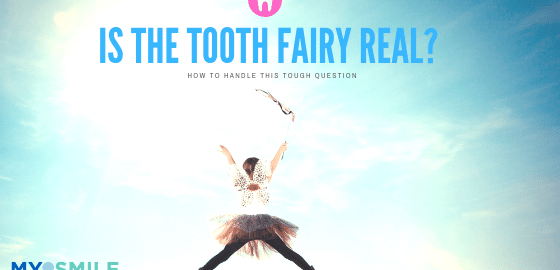
Is the Tooth Fairy Real? How to Handle Tough Questions
Is the Tooth Fairy real? It’s a question every parent dreads answering when the time comes. While some kids start questioning the tooth fairy when they question the Easter Bunny or Santa Claus, many parents report their children called out the Tooth Fairy early on. Let’s take a closer look at the tooth fairy and go over some great strategies parents can follow when their child asks that tough question. Here’s how to handle “is the Tooth Fairy real?”
A Quick Look at the History of the Tooth Fairy
Most people view the tooth fairy as an iconic symbol of childhood. Unlike other myths that evolved over time, the Tooth Fairy is a recent creation that hasn’t been around forever. The Tooth Fairy that we know of today originated in Europe as the image of a mouse. When children lost their baby teeth, the mouse would enter the children’s room and take it away. The mouse was popularly used across countries such as China, Russia, and Spain.
So, what’s the significance of a mouse in relation to our teeth? Rodents continue to grow their teeth their entire lives, so the mouse was a symbol used to transfer good luck to the child who lost their tooth. The All-American Tooth Fairy we imagine today was inspired by other fairies in the pop culture. Unlike the mouse, this Tooth Fairy didn’t have a specific look. From young to old, human to spirit, today’s Tooth Fairy came in countless shapes and sizes.
In 1927, the modern Tooth Fairy was born because of a popular book. In line with the popularity of Walt Disney’s fairy characters, the Tooth Fairy grew in popularity and became a presence in households everywhere. Over time, Tooth Fairy traditions changed. Where most children received a small coin for their tooth, the growing rate for a tooth today seems to be higher and higher. Some children receive more money for their first or last tooth. Others get more money as the size of their teeth grows.
The modern Tooth Fairy has been referenced in hundreds of plays, books, cartoons, and feature films. It is also a great resource for dentists and orthodontists. Today’s oral health providers use the tooth fairy to encourage oral hygiene, bring awareness to the importance of dental health, and make dental work easier for kids.
How to Handle the Question of Is the Tooth Fairy Real?
If your child begins to have doubts and asks you is the Tooth Fairy real, you can handle it the following ways.
Consider the true meaning behind the question.
Is your child looking for you to be honest with them or are they looking for you to reassure them so they can keep believing? A great way to handle the question is the Tooth Fairy real is to find out why your child is asking. Ask them why they ask or what their thoughts are on the topic. If you feel they are ready for the truth, give it to them. But, if they seem like they are holding on to the hope that the Tooth Fairy is real, give them a chance to believe.
You should also consider their age. A preschooler feeling that the Tooth Fairy isn’t real will cause an issue with other children who clearly believe. In the same way, a middle school child who still believes might be faced with social issues. When addressing the question of is the Tooth Fairy real, gauge your response by the impact your answer will have on your child and their peers.
Be gentle with your response.
Whether your children really know if the Tooth Fairy is real or not, it’s always difficult to get confirmation from parents. You don’t want your children to feel like they can’t trust you once they find out the truth. Explain to your children that the Tooth Fairy is a tradition that has been around for decades. If your children seem to be upset with your answer to the question is the Tooth Fairy real, make something positive out of it.
Talk about your child’s favorite memory of the Tooth Fairy. Remind them how much fun it was preparing for the Tooth Fairy’s arrival. Reassure them that parents continue the tradition of the Tooth Fairy because it brings children a lot of joy during their childhood.
Be prepared for how they will respond.
Some children laugh when they find out that their parents have been playing the Tooth Fairy. But, for some kids, getting the truthful answer to is the Tooth Fairy real is tough. Many kids cry as they grieve the loss of a piece of their childhood. And some even get angry, feeling upset about being misled by their parents.
When you answer your child, determine how to handle their response together. Explain that it’s important they continue to hold the secret from younger children in your family. If they seem particularly upset, you can have them help you continue the Tooth Fairy tradition with their younger siblings.
It’s never easy to answer the tough question is the Tooth Fairy real? But, it’s inevitable that parents are faced with this tough question. Even if your children no longer believe, you can use the Tooth Fairy to bring awareness to the importance of oral health. The fairy may be imaginary, but the impacts of poor oral hygiene are very real. Don’t forget to discuss this with your kids once they’ve handled the impact of the real truth behind the Tooth Fairy.
